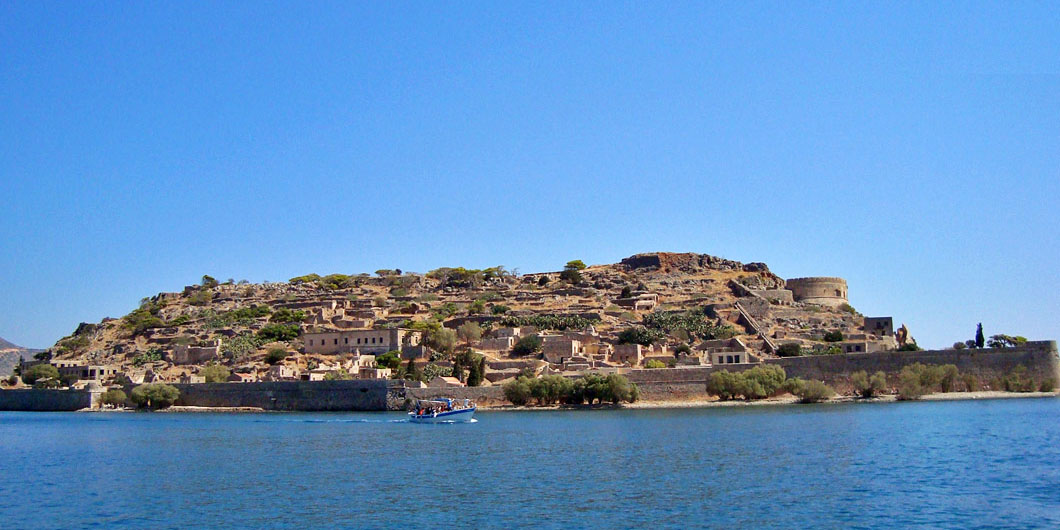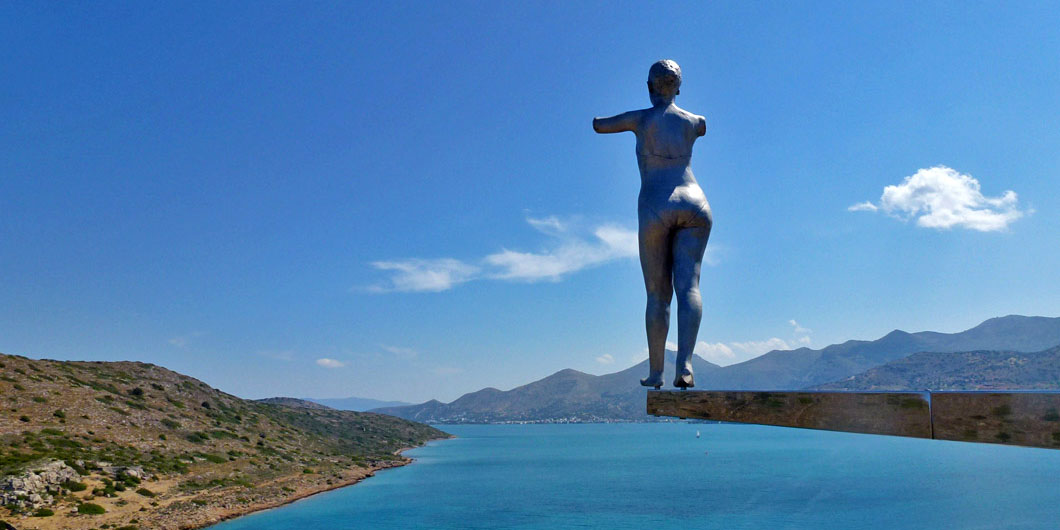Spinalonga is a small island-fortress located at the northern entrance to Elounda bay, at a strategic point that secures control over the natural harbour of Elounda. An ancient fortification existed on the site of the fortress that can be seen today, for the protection of the port of the ancient town of Olous.

These ancient fortifications had been seen and recorded by travellers of the 16th century, before the current Venetian fortress was built (1579-1586).
The island was called Kalydon in Antiquity. After the Venetian conquest, it was named Spina Longa, which means “long thorn” in Latin, and was later corrupted to Spinalonga.
The castle of Spinalonga, together with the fortresses of Souda and Gramvoussa in Western Crete, were considered impregnable, and remained under Venetian rule for many years after the Turkish conquest.
In the years of the Cretan War of 1645-1669, and until Spinalonga fell to the Turks, numerous Cretan refugees and revolutionaries took shelter on it, and used it as a base for their attacks against the enemy.
Spinalonga was surrendered to the Turks by a treaty in 1715, 50 years after the fall of Handax (city of Heraklion). During the Turkish rule, a settlement was gradually built on Spinalonga, by Muslim families who sought a safe living area, fearing retaliation attacks by the Cretans.

The last yet saddest chapter in the history of the small island was written after the withdrawal of the Turks. Up until the Turkish rule period, people suffering from Hansen’s disease (leprosy) were not confined in special institutions; they usually resided near the entrances to the cities, and lived off of charity offered by citizens and visitors. In 1909, however, Spinalonga was transformed into a leper colony and continued functioning as such until 1957.
Life on the small, barren island was particularly hard for the confined patients, whose sad stories established Spinalonga as a place of martyrdom and historical memory to those living in the outside world.
Nowadays, one can visit Spinalonga by taking a small boat from Agios Nikolaos, Elounda or Plaka.
The Venetian fortress of Spinalonga is well-preserved. It has two fortified protected zones. The first, which is lower down, follows the coastline, while the second runs along the cliffs above it.

The two strong crescent-shapedfortifications, which were built to protect the port of Elounda with their cannons, stand out.
The vaulted water reservoirs, the garrison building, a powder magazine and a church of Saint Nicholas (Agios Nikolaos) survive today from the Venetian period, as well as numerous buildings of the Turkish settlement and the leper colony facilities.















